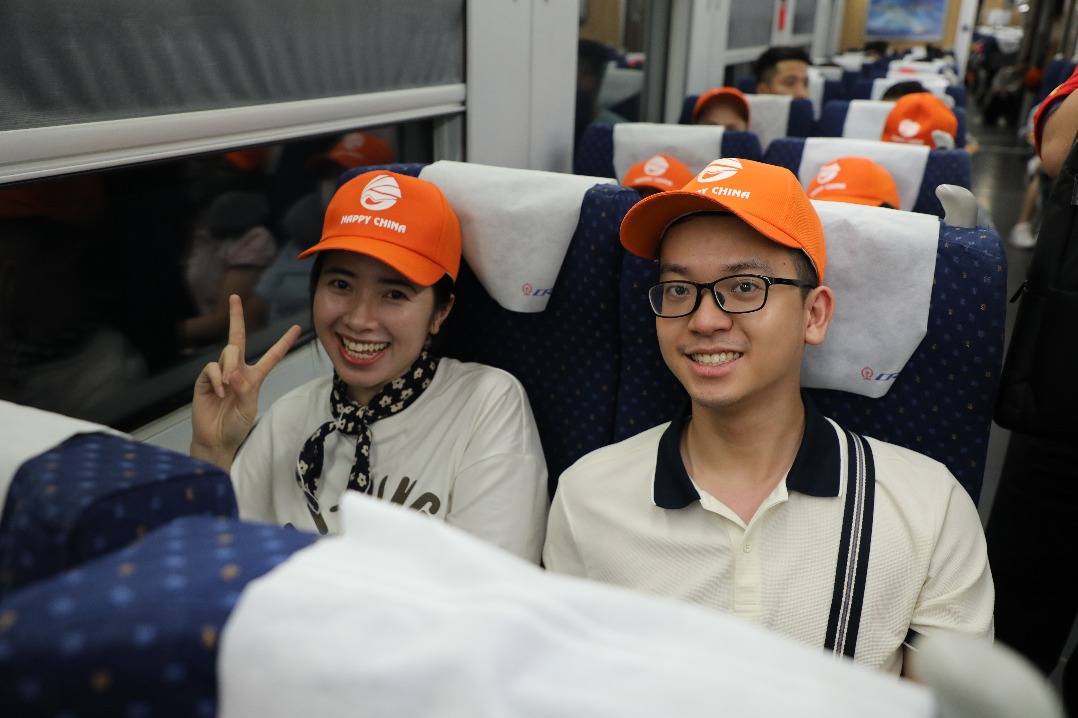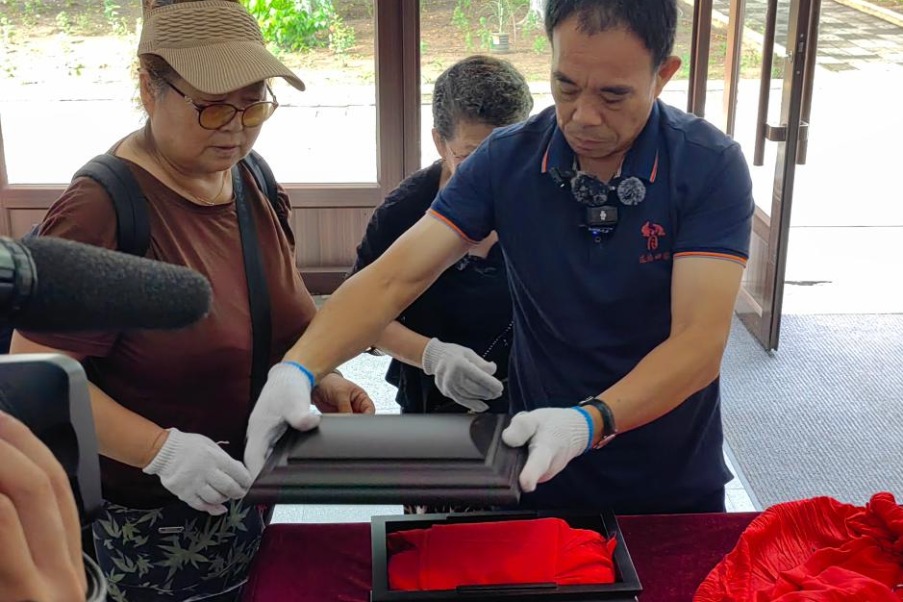Chinese scientists develop 'NeuroWorm' fiber for neural monitoring

Chinese scientists have devised "NeuroWorm", an intelligent microfiber capable of navigating freely within the body, demonstrated through lab tests on mice, providing insights for brain-machine interfaces and neural regulation in treating certain chronic diseases.
Tests revealed that the microfiber, which is about 200 micrometers in width and as thin as two strands of human hair, can monitor neural electrical signals and minute tissue deformations across large areas of the body or brain while moving, unlike similar materials from other studies, that remain fixed in one location.
Such advancement could redefine treatments using brain-machine interfaces or neurological disease therapies, the researchers explained.
"Unlike traditional Parkinson's disease treatments that require implanting multiple electrodes in different brain regions, the 'NeuroWorm' is implanted once and can navigate various affected areas, monitoring neural electrical signals and even alleviating symptoms through electrical stimulation," said Yan Wei, a lead scientist on the team.
"For disabled patients who need brain-machine interfaces to help move restricted body parts, this technology is equally beneficial. With a single implantation of this fiber, it can monitor neural electrical signals across a wide range of the body," said Yan, a researcher from the College of Materials Science and Engineering at Donghua University in Shanghai.
Inspired by the segmented body structure of earthworms, which allows for distributed sensory and motion control, the research team led by Liu Zhiyuan, a researcher from the Shenzhen Institute of Advanced Technology, Chinese Academy of Sciences, and Yan, developed the "NeuroWorm".
"This dynamic, soft, and stretchable microfiber serves as a neural interface, offering significant advantages over traditional neural interface devices that are static and require invasive procedures for repositioning," Yan said.
The "NeuroWorm" fiber has other advantages over traditional devices, they said. For example, it is embedded with 60 nano-level micro sensors, 15 times the number found in traditional methods. This allows for precise multi-point monitoring of neural electrical and biomechanical signals while navigating within the body after being implanted in the muscle or navigating within the brain after being implanted in the cerebral cortex of mice, said Yan.
Furthermore, the fiber possesses excellent competency in softness. Long-term experiments on mice showed high biocompatibility, with the microfiber remaining in muscles for up to 13 months without adverse reactions, the researchers said.
"A key innovation lies in the fiber's ability to navigate within the body. Using an open magnetic control strategy, we achieved initial controlled movement and steering within tissues, allowing the fiber to move like an earthworm through soil and record neural signals all along the path without the need for additional surgeries," said Yan.
The study was published on the website of the journal Nature on Wednesday.
Zhu Meifang, a strategic advisor of the study, who is also director of the State Key Laboratory of Advanced Fiber Materials at Donghua University, said this breakthrough aims to transition bioelectronics from fixed passive recording to mobile intelligent collaboration.
"The team hopes to work with more institutions in the application field to accelerate the practical use of the technology, potentially transforming the landscape of the clinical use of brain-machine interface devices as well as neural disease treatment and monitoring," she said.
- Chinese scientists develop 'NeuroWorm' fiber for neural monitoring
- China central government allocates more than 4 trillion yuan to Xinjiang since 2012: white paper
- Xinjiang guarantees religious freedom, lawfully administers religious affairs: white paper
- Shanghai Education Commission addresses school lunch safety concerns
- China-Singapore forum advances green development cooperation
- WDCC 2025 to spur creativity and innovation in Shanghai, abroad




































